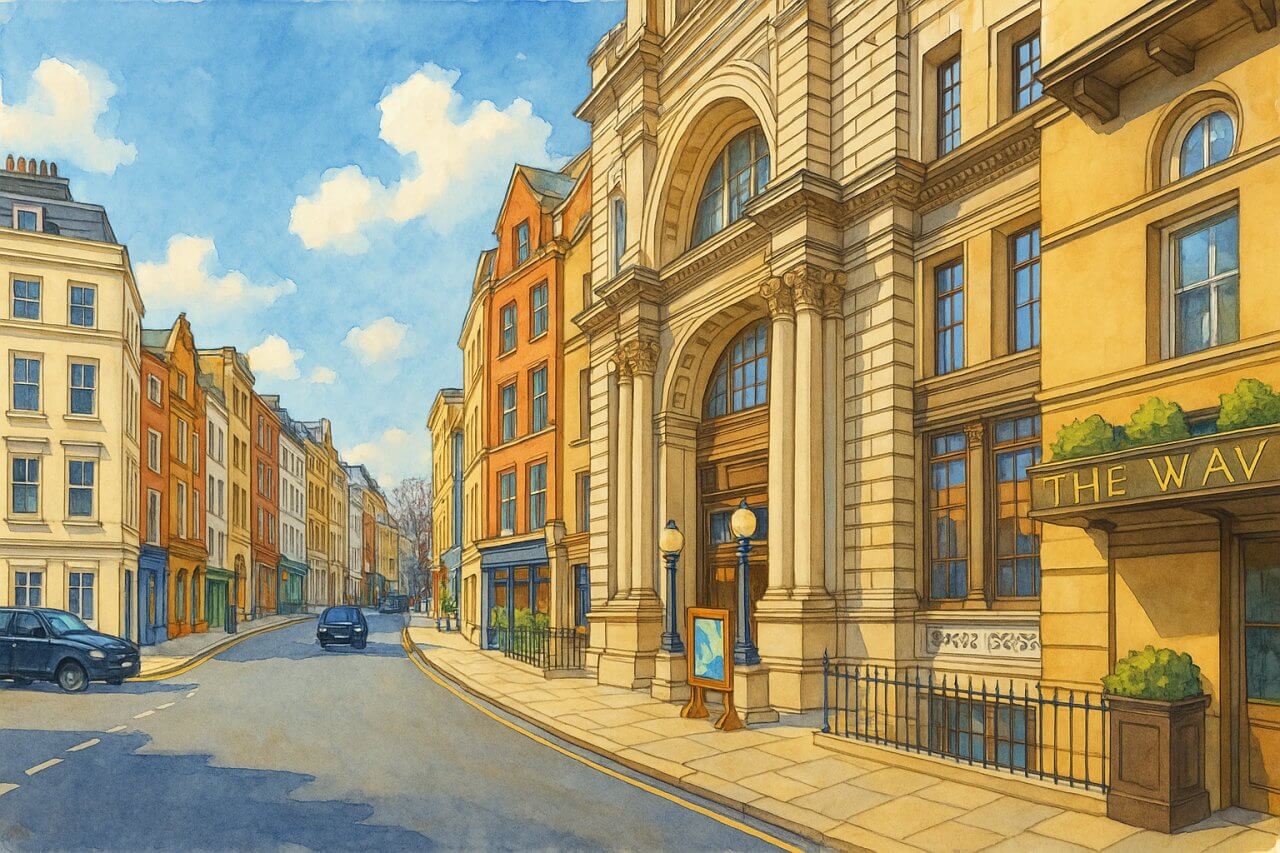
Curzon Street, London
Curzon Street, Mayfair: Prestige, Power and Past
A quiet but powerful artery through the heart of Mayfair
Curzon Street is located in the prestigious district of Mayfair, within the City of Westminster in Central London.
It runs in an east-west direction, connecting Fitzmaurice Place to Park Lane and forms one of Mayfair’s most historically significant and quietly influential thoroughfares, often overlooked despite its prime location and storied past.
How Long is Curzon Street?
Curzon Street stretches for approximately 0.3 miles (roughly 500 metres). Though modest in length, it plays an outsized role in Mayfair's identity and character.
The History of Curzon Street
Curzon Street dates back to the early 18th century and was part of the extensive development of Mayfair from rural fields into an aristocratic urban neighbourhood.
Originally known as Mayfair Row, the area evolved alongside the growth of Grosvenor Square and surrounding estates. By the mid-1700s, Curzon Street was lined with stately homes and had become a fashionable address for nobility and later, wealthy industrialists and foreign diplomats.
Origin of the Name “Curzon Street”
Curzon Street was named in honour of the Curzon family, a prominent English aristocratic lineage. The Curzons held extensive land and political power, with their title linked to Kedleston Hall in Derbyshire.
The name was officially in use by the late 18th century. George Nathaniel Curzon, later the 1st Marquess Curzon of Kedleston, would go on to become Viceroy of India and Foreign Secretary in the 20th century — adding further prestige to the name.
How to Pronounce “Curzon”
“Curzon” is pronounced as KER-zun, with the emphasis on the first syllable.
IPA pronunciation: /ˈkɜːzən/ 
Connecting Roads
Curzon Street runs from Park Lane in the west to Berkeley Street in the east, with key connecting streets including:
- Bolton Street
- Chesterfield Gardens
- Chesterfield Hill
- Chesterfield Street
- Clarges Street
- Derby Street
- Half Moon Street
- Hertford Street
- Queen Street
- South Audley Street
- Trebeck Street
Landmarks and Attractions Along Curzon Street
Despite its low profile, Curzon Street is home to several notable buildings and landmarks:
- Curzon Mayfair Cinema – One of the oldest independent art-house cinemas in London, opened in 1934. A cultural gem.
- Chesterfield Hotel – A classic luxury hotel offering traditional British hospitality just off Curzon Street.
- Crewe House – A Grade II* listed building that now serves as the Embassy of Saudi Arabia.
- Leconfield House – Once the headquarters of MI5; this post-war building has seen secret intelligence history unfold within its walls.
Real Estate and Character of the Street
Curzon Street lies at the heart of prime Mayfair real estate, one of the most expensive areas in London and indeed, the world.
As of early 2025, property prices along Curzon Street range between £3,500 to £6,000 per square foot, with luxury flats commanding upwards of £5 million.
Compared to the average London property price (approximately £525,000 in 2025), Curzon Street is in the uppermost tier — reflecting its elite status.
The street has a mixed-use character: largely residential, with embassies, private members’ clubs, and discreet commercial properties such as private banks and galleries.
Nearest London Underground Stations
Curzon Street is conveniently located for several Tube stations:
- Green Park Station – served by the Jubilee, Piccadilly and Victoria lines (approximately 5-minute walk).
- Hyde Park Corner – served by the Piccadilly line (10-minute walk).
- Bond Street – served by the Central, Jubilee and Elizabeth lines (about 12-minute walk).
Fun Fact About Curzon Street
Curzon Street was once home to the first computer-controlled traffic lights in London, trialled in the 1960s. It has also served as a discreet hub for diplomacy and espionage during the Cold War era, thanks to the presence of MI5 at Leconfield House.
Quick Facts About Curzon Street
- Location: Mayfair, City of Westminster
- Length: Approximately 0.3 miles (500 metres)
- Named after: The Curzon family, 18th century
- Pronunciation: KER-zun (/ˈkɜːzən/)
- Notable Buildings: Curzon Mayfair Cinema, Crewe House, Leconfield House
- Nearest Tube Stations: Green Park, Hyde Park Corner, Bond Street
- Character: Residential, diplomatic, discreet commercial
- Property Prices (2025): £3,500–£6,000 per sq ft
- Fun Fact: Former home of MI5 and London’s earliest computerised traffic lights
Conclusion
Curzon Street is a quietly elegant part of London that embodies the prestige, privacy, and political importance of Mayfair.
Whether you're strolling to catch a film at the Curzon Mayfair, exploring hidden diplomatic enclaves, or just admiring the discreet luxury, this historic street offers a distinctive slice of London’s elite cultural and architectural landscape.
Map of Curzon Street, London

Painting of Curzon Street, London (View image in full size)